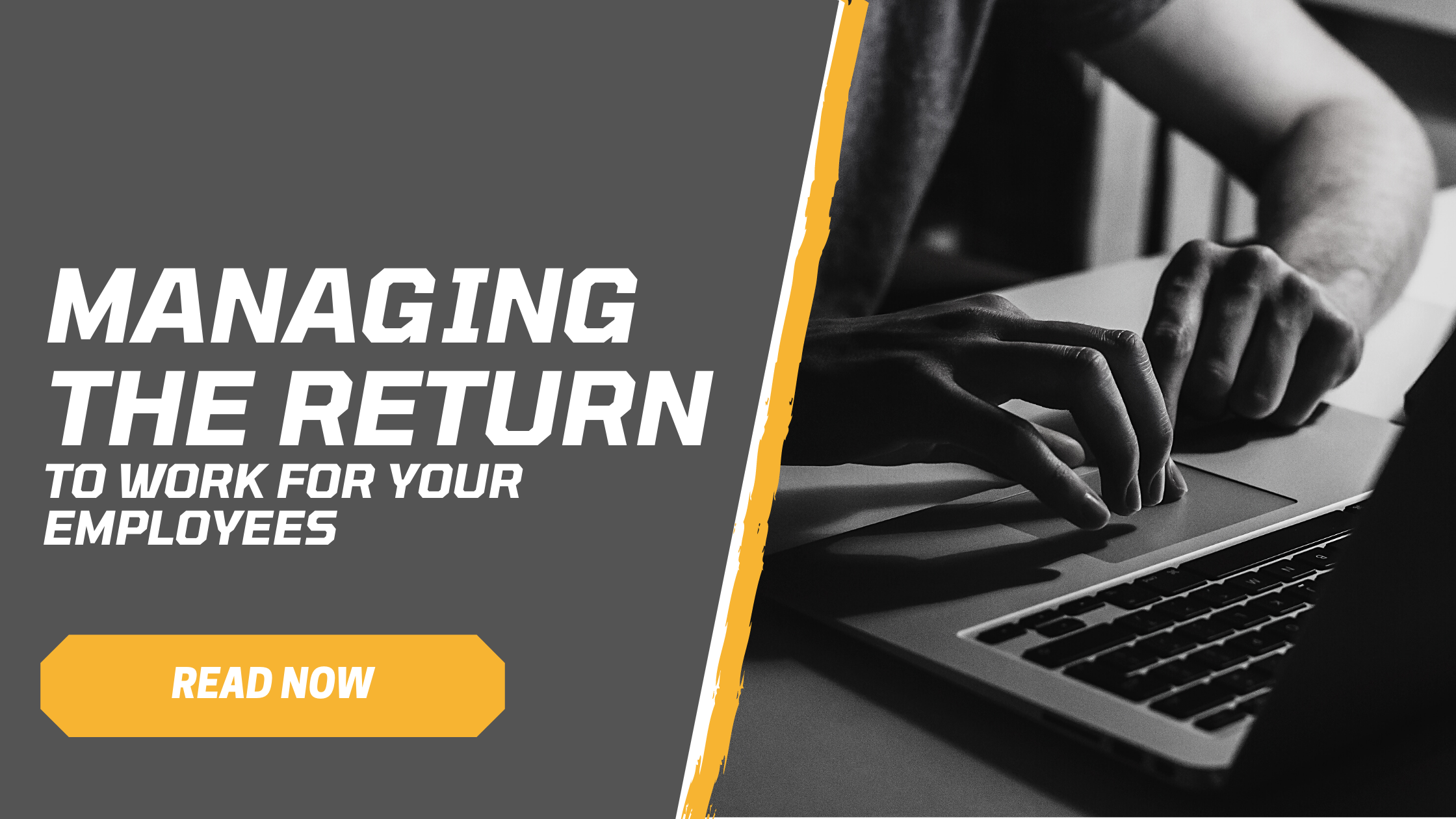
Managing the return to work for your employees
Many people’s expectations for the working environment have changed. With new methods showing the capability of remote working, it has become a favoured idea for those already in the workforce and the younger generation stepping into it. The coronavirus vaccine rollout is giving us a promising light at the end of the road, and businesses need to look towards the future as people begin returning to work. Working from home has impacted a vast amount of people and highlighted this new potential way forward as a way of working, breaking out from the rigid routines of daily offices. Coming to the end of the pandemic means there will be many people uncertain about returning to work and the idea of going back to the old ways can feel like a step backward. A combination of working in the office and at home will create more satisfied employees and increase productivity.
People are asking for more flexibility now with the opportunities to work from home several times a week. As a company, it will be important to keep up with these new ways of working or someone else will; making it significantly harder to retain talent. A global survey of more than 9000 knowledge workers (roles including architects, engineers, scientists, and design thinkers) reveals the high percentage of people from countries such as the USA, UK, France, Japan, Germany, and Australia all wanting to have a hybrid work environment. This hybrid-style allows for the opportunity to work remotely at least 1 day a week and gives employees the chance to balance their time between the office and home. 72% said they prefer the combination of remote and office work, with the rest split fairly evenly between preference over fully returning to the office (12%) and exclusively working from home (13%).
There have been many pros and cons discovered by this abrupt move to remote working and everyone has been affected differently. With only 3% of respondents saying they feel no benefit to working from home, we are left with a vast majority of people who have found parts of their working life far easier. Some of the most common benefits included no commuting, saving money, and improved work-life balance. Higher levels of satisfaction with remote working is felt overall as employees have reduced levels of stress and anxiety, plus a better work-life balance gives them more leisure time and opportunities with family.
Challenges are certainly felt as well. The top challenges with working from home included unstable Wi-Fi, feelings of loneliness or isolation, and keeping up with what others are working on. When it is no longer as simple as turning your chair around to someone and getting an immediate answer to your question, there needs to be a strong focus on communication. Not to mention the lack of bonding when it’s harder to discuss what everyone got up to over the weekend, or their exciting dinner plans when it’s over messages and emails. Maintaining and building working relationships with colleagues was a difficulty many people found, leading to a decreased sense of belonging, which was particularly prominent in new employees. Not everyone is able to work remotely either. People in jobs such as construction and engineering are required to be on site and in particular locations, making it harder to create a hybrid environment.
A mixture of both benefits and challenges is affecting everyone uniquely, and there are steps you can take as an employer to make the transition back to work easier, as well as adapting to new expectations. Such as, keeping a hybrid approach that provides employees with flexibility. It’s not just beneficial to those returning to work, but can also increase productivity across the board to help your business thrive. As a company, it is key to plan exactly what will happen. There has been a lot of confusion and uncertainty throughout the pandemic and the working environment, so be clear in what you are doing, as well as what you want from the team. Having set dates and plans for when people return to work means that it is easy for employees to know where they need to be and when. It’s understandable that plans may change based on government advice or a shift in circumstances for people, so be sure to prepare for as much as you can and allow for flexibility in details. Phasing people back may be helpful in order to create a smoother transition, and don’t forget, it’s been a while since many of us interacted with someone face-to-face!
It can’t really be emphasised enough, but communication is vital, whether that is informing people of changes to plans or to thank them for working through a time period that is new to us all. Guidelines and rules change often so be sure to know your own plan and communicate it clearly to employees. Remote working requires heavy attention on how much people are in contact with each other and there are so many ways of making it easier. Overall, it is important to have flexibility with your team and understand that returning to work for furloughed employees may be a more difficult transition.
With almost three quarters of people from diverse countries having new expectations from the work environment, there are many benefits gained for both employees and businesses. To keep up with the competition, providing employees with flexible, hybrid working makes your business far more attractive to potential talent and retains the skills you already have. If you are looking for new members to grow your team, we can help! Give us a call to find out more and let us discover the best skills to keep your business moving forward.
